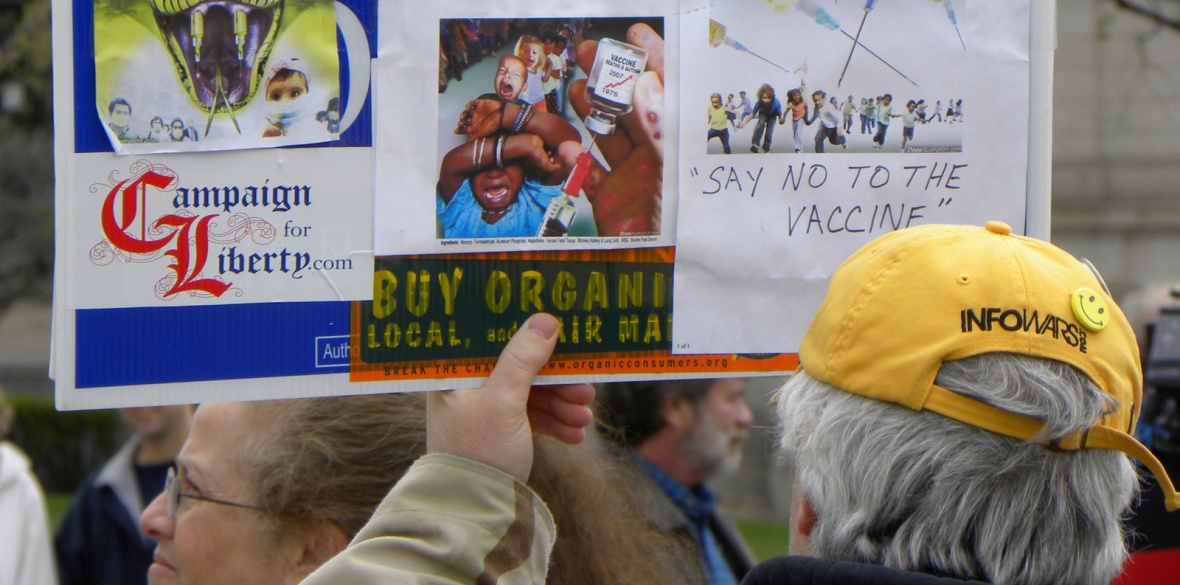This is the last article you can read this month
You can read 5 more article this month
You can read 5 more articles this month
Sorry your limit is up for this month
Please help support the Morning Star by subscribing here
IN 1945, there were 729 recorded deaths in Britain from measles. In 2015, there were none.
This is undoubtedly thanks to mass vaccination campaigns. But what if vaccines have unwanted side effects? It’s certainly something that should be investigated — and has been, again and again and again.
The combined MMR vaccine for measles, mumps, and rubella (two other previously common viral diseases affecting children) was first rolled out in the UK in 1988.
It has become notorious because of concerns about a potential link between the vaccine and autism, an extremely emotive topic. These concerns have been now shown to be unfounded.
The largest trial ever carried out to search for a potential link between MMR vaccine and autism has published its results.
Over 650,000 children in Denmark were followed up after receiving the MMR vaccine.
The study reached the same conclusion as every other large-scale study undertaken in the last 20 years: there is no link between the MMR vaccine and autism.
How can we be so sure? The solution is to study large numbers and quantify any uncertainty with statistics.
The study followed vaccinated and unvaccinated children between 1999 and 2010. The first statistical step is adjusting for the fact that the vaccinated group was much larger than the non-vaccinated group (over 95 per cent of children were vaccinated) and the fact that each of the children were studied for different amounts of time depending on when they were born.
They do this by calculating what is known as the “person-years” in each group, by totalling up how long every child was in the study for across the whole group.
For each group, the researchers then know both how many diagnoses of autism there were and the total number of person-years. From this they calculate a hazard ratio. This is the ratio between the risk of an autism diagnosis in each group. If the ratio is equal to one, then the risk is equal in each group; greater than one would mean the risk of autism is higher in vaccinated children.
While in principle it sounds simple, this is where it gets a little bit fiddly. There is some randomness involved in autism diagnoses — ie the number of children diagnosed with autism varies is not exactly the same each year.
Therefore, statisticians often use a “confidence interval.” This defines a range between the upper and lower estimate of the hazard ratio, where some proportion of these confidence intervals (most commonly chosen to be 95 per cent) will contain the true value of the hazard ratio.
The size of this confidence interval then informs our conclusion about whether the MMR vaccine causes autism.
In the Danish trial, the final confidence interval for the hazard ratio was 0.85-1.02. This is consistent with a range of scenarios: at the upper end, from the MMR vaccine being associated with a small increase in the risk of autism (1.02x the unvaccinated risk) to the MMR vaccine actually being associated with a larger decrease in the risk of autism (0.85x the unvaccinated risk). Since this range contains 1, the “null hypothesis” that there is no change in risk cannot be definitively rejected.
Critics might point out that this is just one study. A danger is that we fail to notice a connection between the MMR vaccine and autism even though it is there, due to random chance.
By combining many different studies, the probability that you have failed to notice a link if it is there gets smaller and smaller. Think about trying to decide whether a die is biased.
Rolling it twice and getting two sixes is much less convincing evidence than rolling it 1,000 times and getting 1,000 sixes.
Indeed, studies looking at the link between the MMR vaccine and autism have been repeated many times, all with the same result.
The results of several studies can also be combined into a more powerful “meta-analysis” — for the MMR vaccine five studies have been combined to give a total of 1,256,407 children examined.
Again, it concluded that there was no evidence to suggest a link between the MMR vaccine and autism.
Where did the fear of a link come from?
It was first suggested by Andrew Wakefield, a gastroenterologist who published a now notorious article in the Lancet medical journal in 1998.
Wakefield had studied just 12 children with gastrointestinal disease and autism, who had all previously received the MMR vaccine. From this he proposed a link between intestinal disease development and autism.
However, at a press conference for the release of his research, Wakefield made a much stronger claim, saying that he couldn’t “support the continued use of these three vaccines until the issue is resolved.”
The press seized on these remarks, creating a media frenzy that has helped the myth to persist for over 20 years, despite the best efforts of other researchers who have found no link.
Wakefield was later alleged to have been paid by solicitors looking for evidence to link autism and vaccines prior to the release of his research.
The General Medical Council investigated, finding that Wakefield had acted “dishonestly and irresponsibly.” He was struck off the British medical register and his paper was retracted from the Lancet.
In contrast to the large studies we’ve talked about and their careful statistics, his paper falls unbelievably short.
Don’t feel too sorry for Wakefield. He’s had a glittering subsequent career as a scientific pariah and anti-vaccine activist embraced by the US right, including an appearance at Donald Trump’s inauguration ball in 2016.
Of course, this is an ad hominem attack and says nothing about the quality of his previous research. But it’s also the case that his previous research on 12 children has also been comprehensively debunked by studies of millions.
If you’re a worried parent, we understand the deep desire to protect your children from harm. The best way to do this is to vaccinate them. No children should be dying from preventable diseases when vaccines are readily available.









